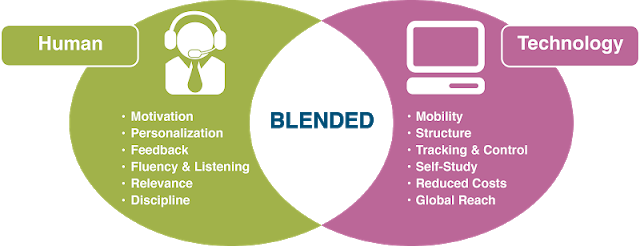The first activity for week one has been an eye-opener one and already has me pondering on how I can make better use of technology in my higher education courses. Most importantly, I now believe that I had somewhat of a misconception about just exactly what blended learning is and can be. Now I realize that, even though I integrate technology into my classes, I do not think I could actually say they would fall under a blended learning paradigm.
First impression
At this point I start to think that blended learning is more than just the use of technology in the classroom, be it for consultation and production, and that it reaches as far a being called a method of teaching and learning, where instruction and tasks are completed in a certain way with an outcome that accounts for the use of technology at different stages of the learning experience.
Take aways from activity one
Other than the new perspective that I am starting to form, regarding blended learning, there are also some initial take aways from activity one.
The first one is that it becomes clear that in a blended learning model the teacher sets up the scenario / situation by presenting the theory and concepts related to the topic of the lesson. While the teacher may be doing most of the talking, students are mainly listening and taking notes. Technology is used as a consultation resources where the teacher can display text, visuals and other forms of media to facilitate initial student impressions.
The second take away is that student use the technology as a means of practicing and applying what was presented by the teacher. This is were technology comes in the most handy in that students do not necessarily have to wait to go out into the field to apply theory; it can be done right there in the classroom. However, at the same time I consider this can be a challenge in some fields of study and/or courses. If the institution does not have a specialized software for a given course topic, recreating real-world scenarios will be limited to the available popular software and the creativity of the teacher in how said available software can be used.
The third take away is in a similar vein to the second in that blended learning provides students with the opportunity to learn by trial-and-error. This is where the functionalities of the software play a key role in the learning experience students may have. In a sense, by clicking and dragging students can immediately see results, in some way, of the changes they apply within the environment of the software. I there is a specialized software, then it will provide the required experience to students experimentation. Otherwise, as mentioned before, it would be up to the teacher to set up the practices so the necessary trial-and-error experience happens.
The last take away that I would like to mention refers to the diversity that can happens as part of the learning experience when in a blended learning model. Of course technology brings not only text by the opportunity of multimedia into the education field, although it is up to the teacher to make good use of this. When done right, students learning experience can be dramatically enhanced and, in turn, obtain a deeper understanding of the course topics. It clearly represents a great deal of work on behalf of the teacher. Depending on the institutional context, software implementation and material development could be scheduled to be gradually developed and implemented.
Final thoughts on activity one
Activity one is an eye opener to what blended learning is and what can be accomplished within this teaching and learning model. Personally, I am quick to ponder on how I can improve my use of technology in my higher education courses and just how far within the blended learning realm I can go into, where my key motivator is to enhance the learning experience.



